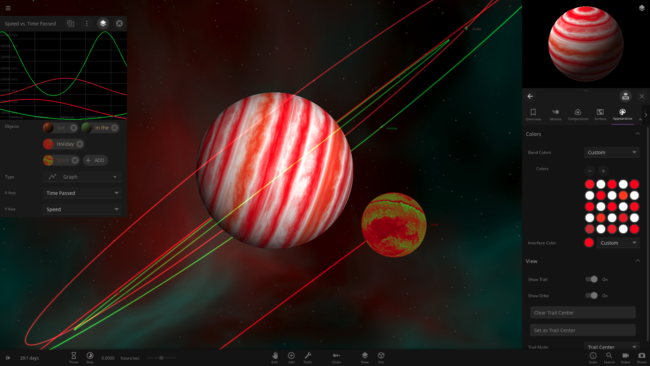Update

Clouds in Motion | Update 27.1
Jun 21st
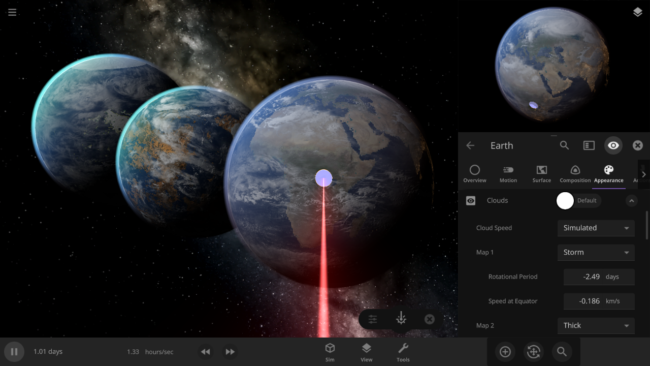
Run Steam to download Update 27.1, or buy Universe Sandbox via our website or the Steam Store.
Update 27.1
Cloud speed is now simulated based on an object’s temperature and rotation speed. Surface simulation performance improvements, an Appearance interface redesign, adjustable planetary rim lighting, and more round out this minor update.
The feature image shows a laser heating up the Earth to speed up the cloud rotation and our new atmosphere opacity property.
Simulated Cloud Speed
Cloud speed is now simulated based on an object’s temperature and rotation speed as part of our continued incremental improvements of clouds. Check out our new Clouds guide for a tour through our entire cloud system: Guides > Science > Clouds.
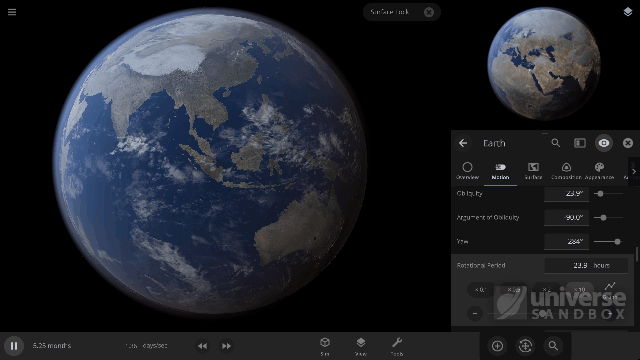
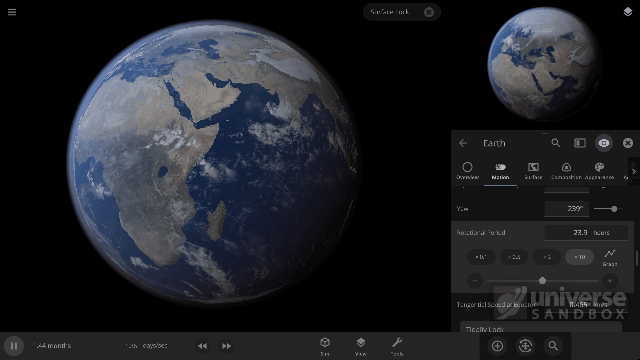
Easier Appearance Editing
As part of our continued user interface improvements, the Properties > Appearance tab has been redesigned to combine color customization with visibility and other options to make changing the appearance of an object even easier.
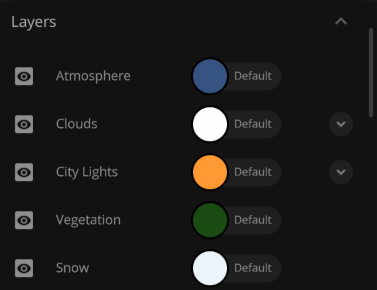
More Highlights
- Surface Simulation has been improved to update only objects that are changing each frame, improving performance for simulations with many objects
- Created simulation of NASA’s Juno spacecraft flyby of Ganymede in June 2021: Open > Historical > Juno Flyby of Ganymede in 2021
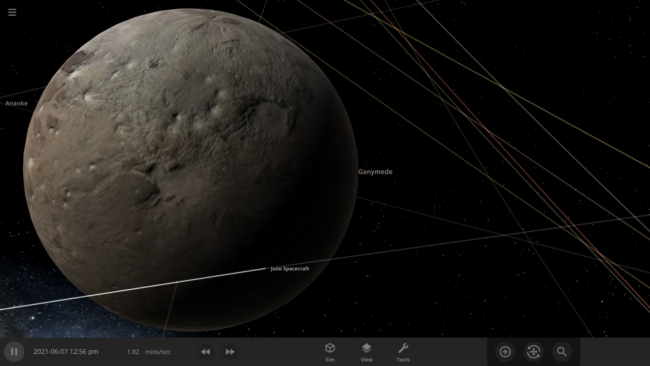
- Star glows correctly fade as you get farther away from them when Object Visibility is set to Realistic again
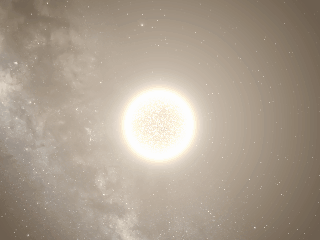
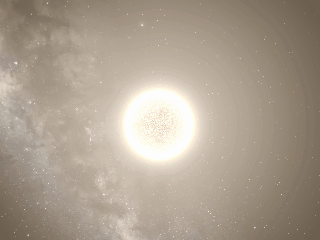
- Added Atmosphere Density and Speed of Sound Properties to Properties > Surface > Atmosphere
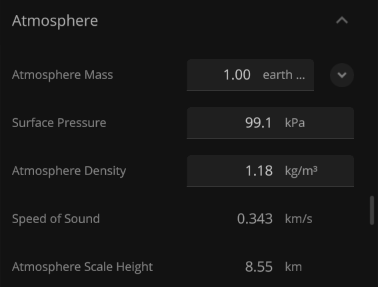
- Rim Lighting can now be adjusted under View > Object Visibility > Rim Lighting
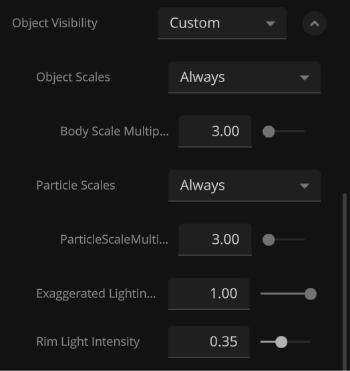
Check out the full list of What’s New in Update 27.1
You can also check out our 2021 Roadmap to learn more about what we’re currently working on!
Please report any issues on our Steam forum, on Discord, or in-game via Home > Send Feedback.

Fast & Flurrious | Update 27
May 3rd
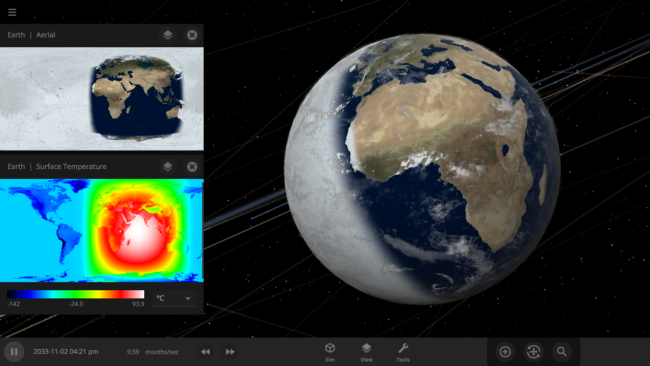
Run Steam to download Update 27, or buy Universe Sandbox via our website or the Steam Store.
Update 27
Snow simulation improvements, more detailed temperature maps, better performance, new cloud visuals, and more are rolled up into Update 27.
The featured image shows what would happen if the Earth was tidally locked, where one side of the planet always faces the Sun.
Superior Snow Simulation
We’re now keeping track of snow so that it falls and melts more realistically. Previously it disappeared immediately if the water vapor got too low. There’s also more accurate snow and ice formations on newly-created random rocky planets!
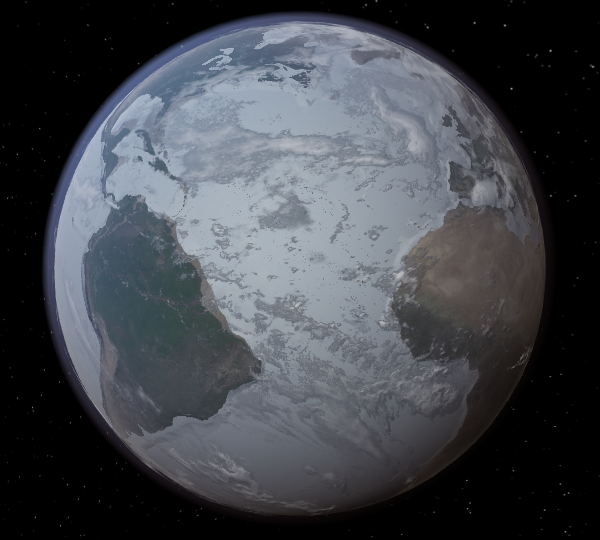
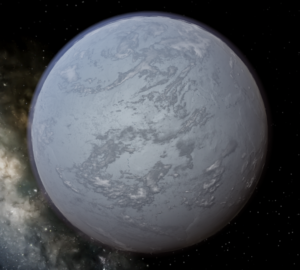
Taking the (Surface) Temperature
Temperature maps have gotten a facelift with the addition of temperature calculations adjusted by elevation. Previously temperature maps were only shown at sea level, even if the elevation data was above sea level.
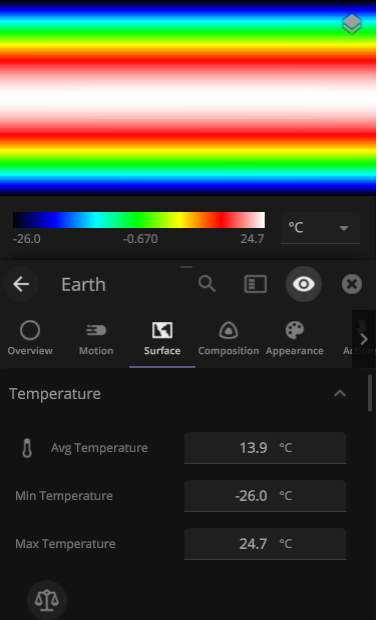
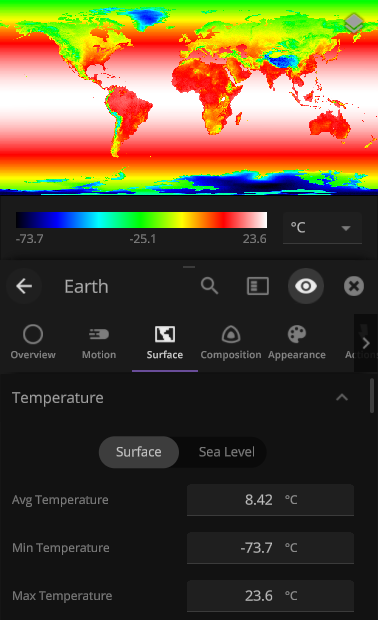
Downscaling to Benefit Non-gaming Hardware
Render Scale has been added as a new graphics setting. This allows you to run the simulation at a lower resolution while keeping the interface looking crisp. The automatic settings have also been updated for improved performance on lower-end hardware.
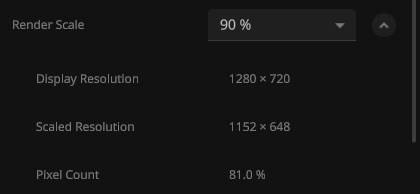
More Highlights
- More customization for cloud visuals on rocky planets, including adjustable coverage and opacity
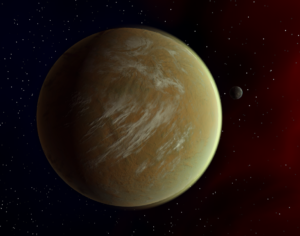
- We’ve added new shapes to our Human Scale Objects
- …and Human Scale Objects can now have custom colors

- View > Object Visibility has been added so that you can see all objects that would normally be impossible to see at realistic scales. You can also really blow them up with advanced settings!
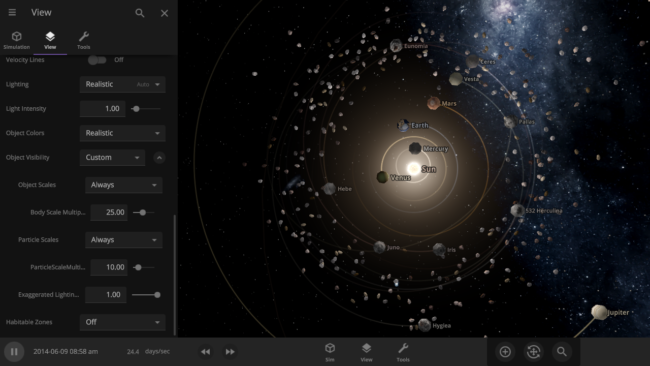
- The Add Panel has been restyled to accommodate smaller screens and to prepare the panel for future plans

- Heating from stars and supernovae is now smoother at high simulation speeds for all spinning objects
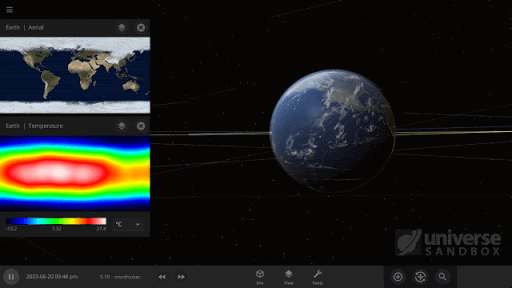
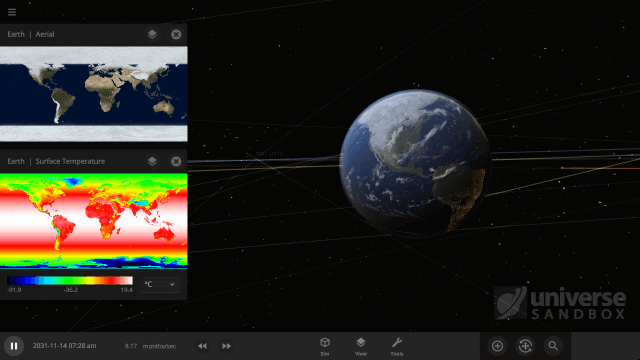
- Our guide system now provides better assistance to new users with Guide Rails
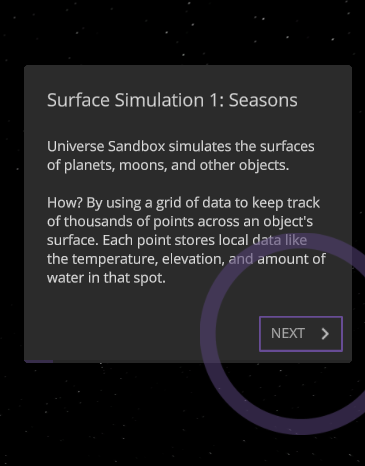
- Curved trails are now more precisely rendered as at high simulation speeds
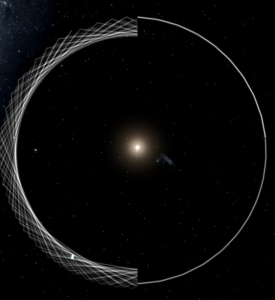
- Dyslexia-friendly font options have been added under Settings > General > Accessibility
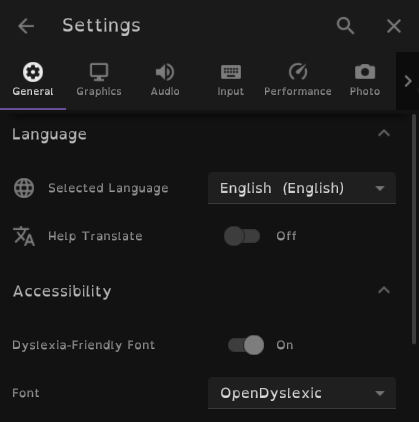
Check out the full list of What’s New in Update 27
Please report any issues on our Steam forum, on Discord, or in-game via Home > Send Feedback.

Splish, Splash, Filling a Bath | Update 26.3
Feb 24th
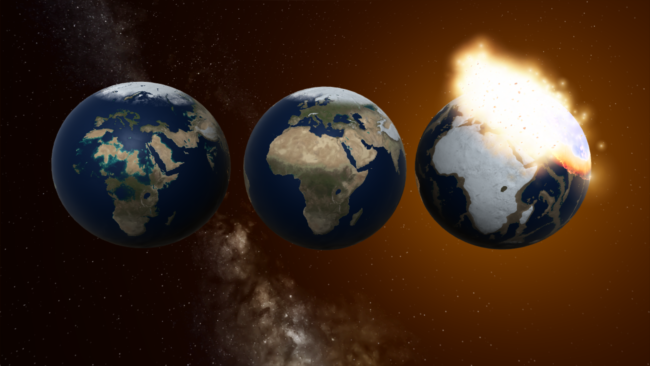
Run Steam to download Update 26.3, or buy Universe Sandbox via our website or the Steam Store.
Update 26.3
Drastically increased collision fragments and framerates, overhauled planetary water distribution, plus dozens of improvements come together in Update 26.3.
Oceans Filling Like a Bathtub
Water fills a tub from its lowest point – why not on a planet? Oceans now start at the lowest elevations and fill valleys like you would a bathtub, creating more realistic-looking continents and oceans. (Previously liquid water would “precipitate” evenly across the surface.)
Buttery Smooth Collisions & Particles Aplenty
Major performance improvements have resulted in epic collisions with double the particles. Fragment generation is substantially more consistent across various simulation speeds. Collisions now perform much more smoothly: in many cases, we’re seeing as much as triple framerate increases.
More Highlights
- Fixed the “annoying bug” that darkened customized planet surfaces
- Ice & Snow, which are simulated separately, now have color options
- Avast, Matey! Change an object’s Sea Level in the properties panel
- Cleaned up the object property panel and added new action buttons
Check out the full list of What’s New in Update 26.3
Please report any issues on our Steam forum, on Discord, or in-game via Home > Send Feedback.

Ending 2020 with a Bang | Update 26.2
Dec 22nd
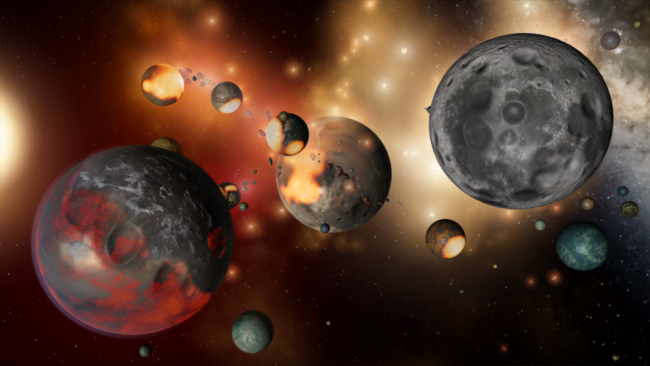
Run Steam to download Update 26.2, or buy Universe Sandbox via our website or the Steam Store.
Update 26.2
Craters from impacts, lasting surface damage, and voluminous explosions all come together in Update 26.2 to close out the year!
Surface Damage & Craters
Molten and heated areas on an object’s surface will appear scorched after cooling, with visible craters in the aftermath of collisions.
Explosions
Rocky objects more accurately vaporize into hot, dense gas clouds when exploded. The simulation of gas particles, which slowly expand over time, is more realistic, and results in dramatic debris clouds after impacts. We’ve also added a Detonation Delay setting to the Explode tool.
Two-Handed Gestures in VR
Move, scale, and rotate the universe using intuitive gestures with both hands and the grip buttons.
Check out the full list of What’s New in Update 26.2
Please report any issues on our Steam forum, on Discord, or in-game via Home > Send Feedback.

Star Fusion & the Brown Dwarfs | Update 26.1
Nov 20th
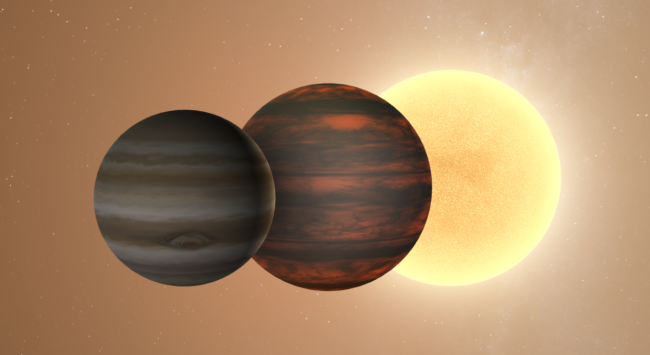
Run Steam to download Update 26.1, or buy Universe Sandbox via our website or the Steam Store.
Brown Dwarf Transitions
We’ve made significant improvements to the simulated transitions of gas giants into brown dwarfs and stars, driven by a newly simulated Fusion Power energy property. Learn more about fusion power and brown dwarfs in our new guide: Guides > Science > Are Gas Giants Failed Stars?
More Color Customization
The color of water on all planets, and the color of vegetation on Earth, are now customizable via Properties > Appearance.
Laser Improvements
Laser presets have been reorganized, and we’ve added a new Push Water setting in the Laser panel. While not entirely realistic, this is a fun way to play with the water simulation on an object’s surface. Try out the “Wave Maker” laser preset to create massive waves in a planet’s oceans..
Please report any issues on our Steam forum, on Discord, or in-game via Home > Send Feedback.

Reimagined Experience – Unified VR & Desktop | Update 26
Oct 29th
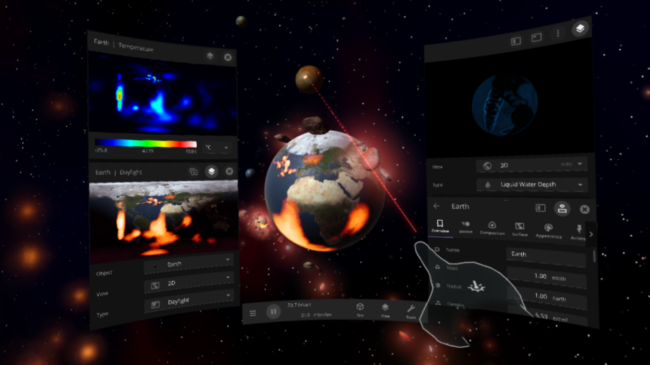
Run Steam to download Update 26, or buy Universe Sandbox via our website or the Steam Store.
Update 26 brings the full Universe Sandbox desktop experience to virtual reality (VR). We redesigned the bottom bar and made visual improvements to collision fragments, rocky planets, and liquid water.
Full Desktop Experience in VR
Universe Sandbox VR now matches the desktop experience and will maintain feature parity moving forward. You can now use virtual hands to manipulate planets, edit properties, or use separate tools in each hand.
Reimagined User Interface
Featuring a customizable bottom bar, our improved user interface makes Universe Sandbox easier to use, more discoverable, and improves support for extra small screens.
Improved Visuals
Collision fragments have new, high-definition graphics and lighting. Elevation maps for rocky planets have more detail. Water graphics now show waves and better light reflection. Asteroids and collision fragments have new highly-detailed dynamic models with better lighting.
This update includes 20+ additions and 50+ fixes and improvements.
Please report any issues on our Steam forum, on Discord, or in-game via Home > Send Feedback.

Even More Color in Space | Update 25.2
Jul 2nd
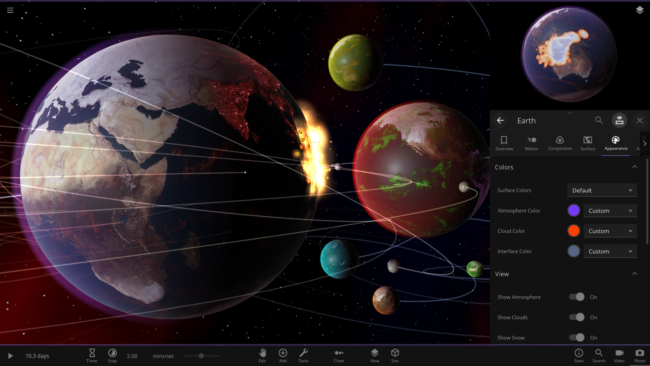
Run Steam to download Update 25.2, or buy Universe Sandbox via our website or the Steam Store, where it’s 33% off until July 9th, 2020.
Update 25.2
Update 25.2 is a minor update that brings even more appearance options, this time to clouds, galaxies, and asteroids. We’ve also improved energy transfer calculations, laser settings, asteroid visuals, and provided various other bug fixes.
Most of the team has been hard at work on our upcoming major updates, but we didn’t want you to wait for these features and bug fixes. Keep an eye out for Update 26 (Coming Soon™) which will bring major improvements to our user interface and VR implementation.
Cloudy with a Chance of Purple
Change the color of clouds, galaxies, city lights, and asteroids. Toggle snow visuals on or off to help distinguish snow from sea ice.
Asteroid Makeover
Asteroids received a complete visual overhaul and color correction.
Improved Energy Simulation
Energy Flow calculations now including lasers, explosions, and impacts. Learn more about Energy Flow from Home > Guides > Science > Energy and Heating in Depth.
Featured Fixes
- Simulations with broken surface data can now be opened
- City Lights no longer appearing incorrectly on some rocky objects
- Black hole radius can now be manually changed as expected
Please report any issues on our Steam forum, on Discord, or in-game via Home > Send Feedback.

Light It Up | Update 25.1
Apr 20th
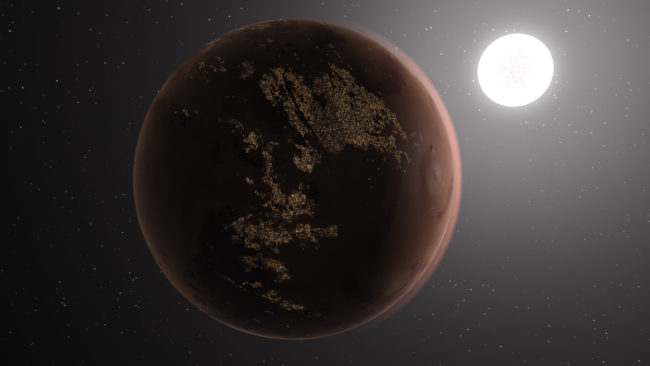
Run Steam to download Update 25, or buy Universe Sandbox via our website or the Steam Store.
Update 25.1 includes a host of bug fixes and lighting improvements, as well as a fun oft-requested feature to add customizable city lights to any rocky planet or large moon.
City Lights on Any Planet
You can now enable City Lights on any rocky planet or large moon by going to Object Properties > Appearance > City Lights. Select from Earth’s city map or a randomized procedural map, and define whether the lights will turn off if the surface is deemed uninhabitable.
Lighting Improvements
The interaction of multiple light sources has been reworked, particularly with how they reflect off an atmosphere.
General Fixes
We fixed a bunch of miscellaneous issues, including improving how supernova clouds impact objects, star temperature instability, orbit previews, shadows, and more.
Please report any issues on our forum, on Discord, or in-game via Home > Send Feedback.
I Like My Heat Tidal | Update 25
Mar 13th

Run Steam to download Update 25, or buy Universe Sandbox via our website or the Steam Store.
Update 25 brings significant improvements to our temperature and surface simulation, adding stability and accuracy, drastically improving speed, new object properties, and a rewrite to our tidal heating model. We’ve also added some often-requested features such as “Replace Object” and graph data export, as well as relocating save data associated with removing the “²” from “Universe Sandbox”.
Major Surface Simulation Performance Improvements
Moving from Shader Model 3 to 5, a feature of most modern graphics cards, allowed us to utilize new technology (compute shaders), lowering the video memory requirements of the surface simulation by almost half and increasing performance substantially. Moving forward, this will allow us to add additional complexity to surface grids, better collisions (using smoothed-particle hydrodynamics), and gorgeous graphical features. Because of this change, we have updated our minimum system requirements.
Temperature & Atmosphere Rewrite
Tidal heating and temperature calculations have just received a major rewrite. This includes significant improvements to vapor flow, atmosphere energy retention, and overall object energy absorption and radiation. You can see these properties in action in the new Energy Flow section in an object’s Surface tab, and in our new Energy and Heating guides.
Hot-swappable Celestial Object
A “Replace Object” button has been added to the Properties panel. This will allow you to hot-swap any object in the simulation for any other object, enabling a bunch of fun scenarios that were hard to do in the past.
The “²” is Silent
Just call us “Universe Sandbox”, we’ve gotten rid of the “²”. When loading the update for the first time, you may notice a “Migrating Data” message. We’re automatically reorganizing settings and saved files to reflect the name change.

Check out the full list of What’s New in Update 25
The Color in Space | Update 24.1
Dec 19th

December 20: Update 24.1.1 is a small patch that fixes a handful of bugs, including issues with gas giant band order and lighting for custom star colors.
Run Steam to download Update 24.1, or buy Universe Sandbox on Steam where it is 33% off until January 2, 2020.
Customize Those Colors
Customize colors for just about every object in the new Appearance tab. Add dozens of bands to gas giants, turn Earth’s atmosphere red, or color your alien star purple. We aim for realism in Universe Sandbox, but that doesn’t mean we can’t also allow for creativity.
Dock Those Graphs
Graphs are now docked alongside the other view panels added with Surface Grids, making it easy to keep your eye on data for different objects and properties as graphs, maps, and surface views.
Launch That …Sword?
We added a sword. Don’t think about this one too much. Add > Objects > Longsword
This update also improves black hole visuals, makes it possible to view Surface Grids data directly on an object’s surface, and adds a bunch of smaller improvements and bug fixes.
The name of this update is an homage to the H.P. Lovecraft sci-fi short story The Color Out of Space. A film adaptation of the same name, starring Nicolas Cage and coming to theaters in January 2020, features a scene with a character playing Universe Sandbox. Catch a glimpse of it in the trailer at the 0:17 mark!
Check out a full list of What’s New in Update 24.1
Happy holidays!
